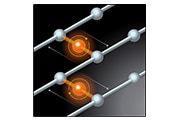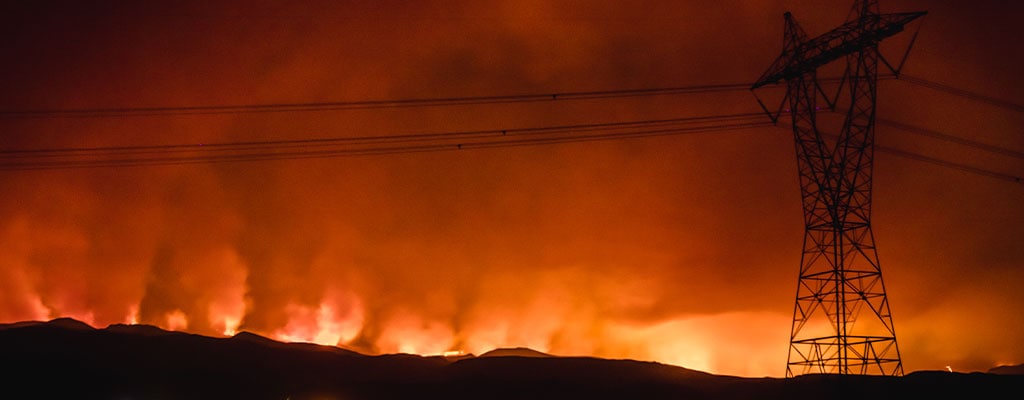A power arc test determines electrical and mechanical resistance to flashover. In this independent laboratory test our overhead raptor cover withstands the brutal force of this destructive test with nominal deformation, no dripping and/or melting proving the resiliency of our Raychem polymer materials to resist ignition. Watch the video.
What is causing the fires?
It Only Takes a Spark
Utilities worldwide are challenged with an alarming host of wildfire and bushfire ignition sources, ranging from power equipment failures and aging infrastructures to materials tracking. The resulting devastation and destruction as recently experienced in California and Australia caused catastrophic environmental damage, financial hardship and human loss.
<25%
of fires associated with power distribution systems are preventable with the appropriate engineering controls
$8M
lost revenue from a fire at a solar farm in California
Wildlife Management
Localized fires caused by critters (squirrels, birds, possums…) infiltrating your overhead lines and substations are often the result of electrocution. They fall to the ground below and spark a fire. We can help you prevent animal induced wildfires and bushfires with our wide selection of insulating wildlife mitigation solutions including bushing covers, cross arm guards and more. Each is manufactured from our unique Raychem polymer material. It’s specially formulated to resist tracking, UV degradation and thermal extremes. We are committed to protecting your network for the life of your assets and reducing the risks of wildfire and bushfires with 60+ years of manufacturing and design experience.
Vegetation Management
The equation is simple. Fuel + Source of Ignition = Fire. Vegetation can act as a fuel to a fire when combined with an ignition source. A vegetation management program is therefore essential to reducing the risk of wildfires and bushfires. We can help you prevent vegetation clashing with conductors and overhead lines while reducing the frequency and expense of trimming and debris removal with reliable safeguards such as overhead line covers and insulators.
Grid Hardening
Aging infrastructure coupled with severe weather can increase the likelihood of bushfires and wildfires. Hardening your grid to make it more resilient and less vulnerable to weather events must be part of any fire mitigation plan. We offer a complete range of insulators and arrestors designed to protect the grids of tomorrow and strengthen them against the volatility of today's changing energy demands. We can help you identify weaknesses and decide upon the most cost-effective measures to strengthen your grid whether that means underground solutions, conductor replacement or arrestor location and more.
Material Performance
To maximize the long-term protection of high-voltage utility assets, we recommend utilizing insulating components that have been cross-linked in the manufacturing process and are engineered from polymers that demonstrate and optimize these essential performance characteristics: Tracking Erosion Resistance (TERT), UV Stability and Chemical Resistance, and Thermal Endurance. Our field proven materials performance can help you prevent ignition sources and prevent wildfire and bushfires from starting in the first place.
Tracking and Erosion Resistance (TERT): TERT provides a measure of a material’s tracking resistance, which is its ability to withstand surface arcing and ignition under high stress environment. Does your material have a sufficient TERT rating? If not, arcing can lead to material deterioration which can lead to ignition and risk of wildfire or bushfire. At TE, we custom blend our polymers with additives that create a virtually non-tracking material that is used in all our products to reduce flashover - and thereby fire ignition sources.
UV stability and chemical resistance: Sitting on top of a pole, exposed to the elements – salt, UV, snow, chemicals, etc – can rapidly deteriorate materials even in just a few short years if the polymer formulation isn’t optimized. The result is increased risk of arcing, tracking and ignition. UV tests such as ASTM G-90 or Xenon lamp (IEC 1109, 5000 hours) are excellent tests to use when comparing products. Tests like Tensile Strength and Ultimate Elongation (ASTM D-638), Chemical Resistance (ASTM D-543) and Accelerated Aging (ISO 188) are excellent indicators of reliability. At TE we crosslink our materials to increase their strength and durability providing enhanced chemical and environmental resistance, and more stable electrical performance.

Thermal endurance: Whether a material can survive the dry cold winters of Canada or the heat and humidity in El Salvador without melting or deforming is a measure of thermal endurance. There are many thermal stabilizers that can increase the overall robustness of the material and extend its life. Cross-linking done at TE takes this to a higher level, especially on the high temperature side where the material can take severe fluctuations without melting or igniting. Be sure to review tests like IEEE 1-1969, IEC 216, and ISO 188 when comparing materials for thermal endurance.



